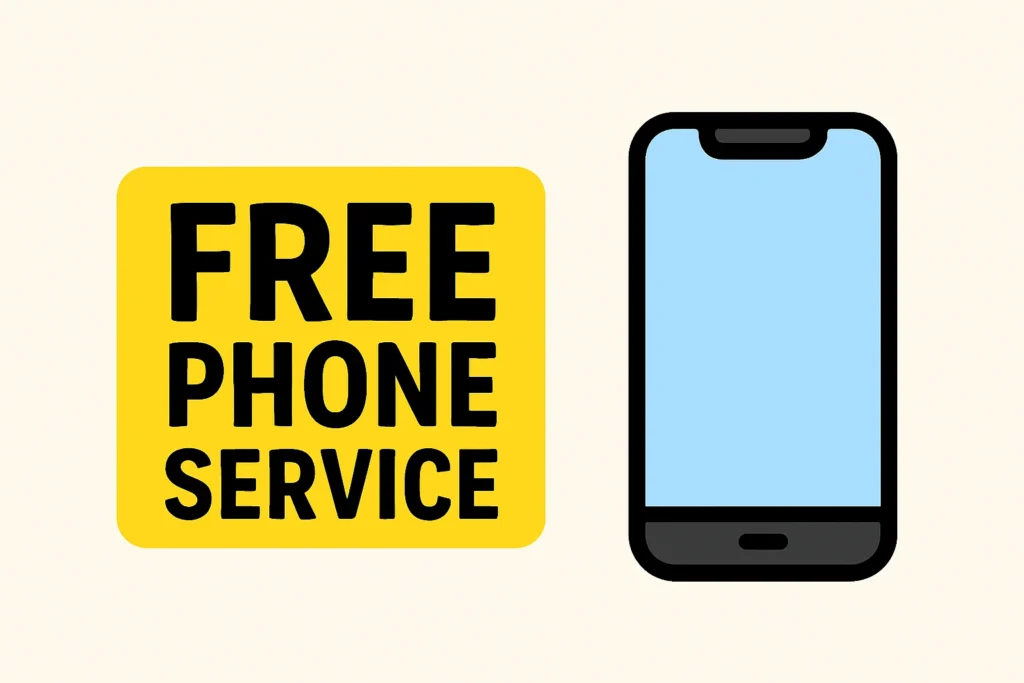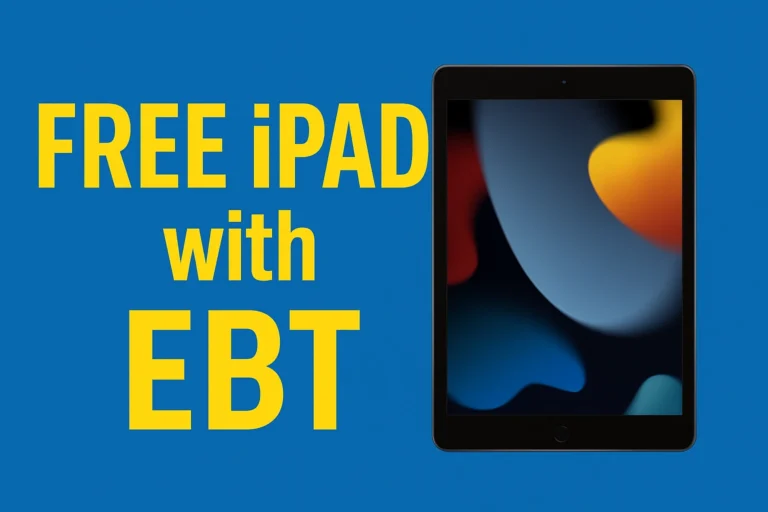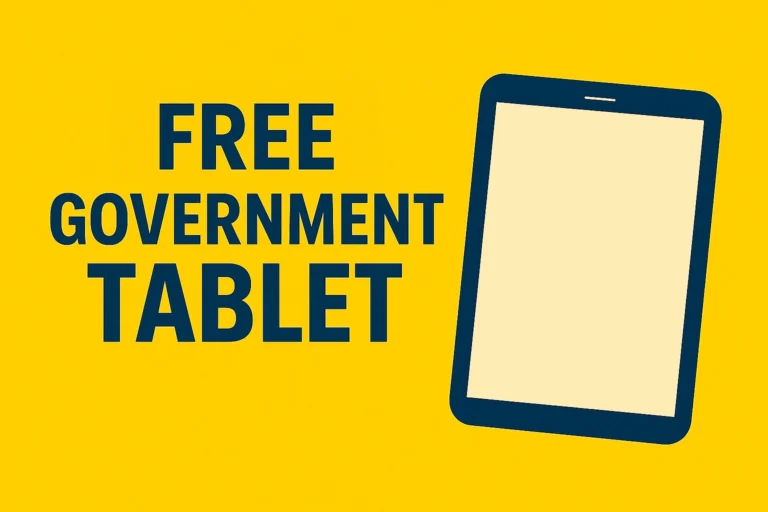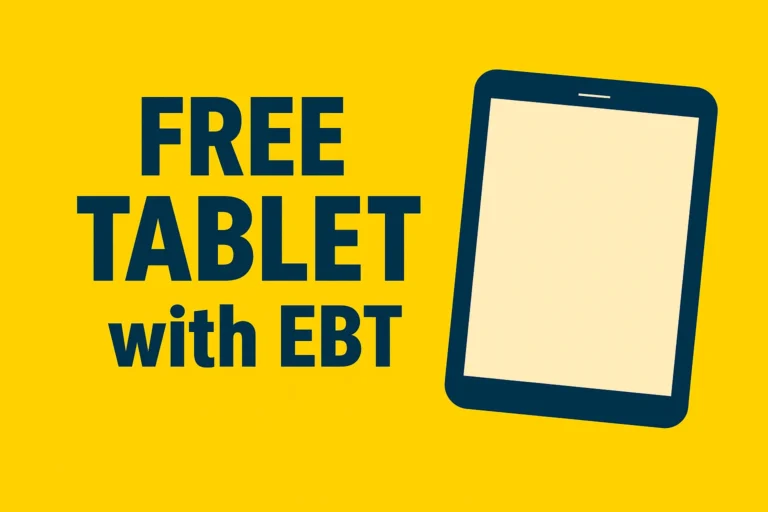Free phone service is available through government programs like Lifeline, low-income plans, and carrier promotions that offer free phones with new service or switching deals. You can qualify through income or benefits such as SNAP/food stamps, or use bring-your-own-phone options to get free cell phone service without buying a device. Several providers offer free smartphones, free unlimited plans, or free trial phone service, depending on your eligibility.
Most articles about free phone service repeat the same surface-level info like “apply for Lifeline,” “check a provider website,” or “switch carriers for a free phone.” But if you’ve actually tried to sign up, you know it’s rarely that simple. Providers have different approval rules, BYOD compatibility can fail, and many people don’t realize they could qualify through SNAP, Medicaid, or even income alone.
If you want a full, updated (2025) breakdown of how to get free phone service, this guide walks you through it.
Am I Eligible for a Free Phone Service?
Most people are surprised to learn they already qualify for some kind of free phone plan or discounted phone program. Eligibility isn’t limited to seniors or people on multiple benefits; it now includes millions of households who meet simple income rules or use common assistance programs such as SNAP, Medicaid, or SSI. Here’s the fastest way to understand whether you’re eligible.
1. The quickest way to check eligibility
You’re usually approved if any one of these applies. You’re enrolled in a qualifying assistance program, such as:
- SNAP/food stamps
- Medicaid
- Supplemental Security Income (SSI)
- Federal Public Housing (FPHA / Section 8)
- WIC
- Veterans Pension or Survivors Benefit
- Tribal programs (BIA, Tribal TANF, FDPIR)
If you’re on SNAP, you’re almost always eligible for discounted or fully covered monthly service.
Or your household income meets the federal guidelines.
Most programs use an income limit around 135%–150% of the Federal Poverty Level.
2. If you qualify, what you can get
Depending on the provider and state rules, approval can come with:
- A no-cost monthly phone plan
- A basic smartphone (when in stock)
- A SIM/eSIM so you can use your current phone
- Discounted upgrades for better devices
- Options for either mobile or home phone assistance
Plans vary widely, which is why many people get confused because the benefits are not identical everywhere. The plan you receive depends on your state’s fund, the provider’s stock, and whether you apply through Lifeline or a low-income promotional service.
3. What doesn’t affect your eligibility
You can still qualify even if:
- You already have a paid phone plan
- You owe a balance to a previous provider
- You don’t have a credit score
- You don’t have a smartphone (they’ll give you one if available)
- You only want a free phone service trial or temporary help
- You want a free phone with new service instead of Lifeline
4. Why do people get denied
Denials usually come down to paperwork, not eligibility. The most common issues are:
- Unclear or outdated documents
- Address mismatches (especially in apartment buildings)
- Name or ID inconsistencies
- The provider doesn’t cover your area
- None of these mean you’re not eligible, as they’re all correctable.
The Two Ways to Get Free Phone Service: Government Programs vs. Carrier Promotions
Feature | Government Programs (Lifeline & Low-Income Plans) | Carrier Promotions (Switching Deals, Free Phones & Trials) |
Who it’s best for | Households using SNAP, Medicaid, SSI, or meeting 135% FPL income guidelines | Anyone who wants a newer device or doesn’t qualify for income-based help |
What you can get | Free monthly service, basic smartphone (when in stock), or SIM/eSIM for your own phone | Free phone when you switch, discounted plans, short-term free trials |
How long it lasts | Ongoing, as long as you remain eligible and recertify yearly | Short-term promos (1–12 months) or bill credit–based “free phone” deals |
Cost after sign-up | $0 for qualifying plans | Usually full plan price once promo ends (unless on bill credits) |
Requirements | Income-based or benefit-based qualification, ID verification | Porting your number, new line activation, autopay, sometimes credit check |
Phone quality | Basic to mid-level smartphones | Mid-range to high-end phones (often brand new) |
Pros | Reliable long-term help, no contracts, flexible BYOD options | Best hardware deals, free trials, good for upgrades |
Cons | Limited phone models, stock varies by location | Prices rise after promo, must maintain plan to keep credits |
How to Apply for Free Phone Service
Applying for a free phone looks like a walk in the park if your strategy is well-guided. Getting approved on the first try is where most people struggle, mainly because documents don’t match or information is incomplete. This version walks you through the process in the exact order that avoids delays and unnecessary rejection.
Step 1: Gather the three documents that almost guarantee approval
Most people only upload a single document. Submitting all three gives you a much higher approval rate.
- Identity document
- Driver’s license
- State ID
- Passport
- Tribal ID
- Address verification
- Recent utility bill
- Lease agreement
- Official mail showing your address
- Benefits letter with address
- Eligibility proof
- SNAP or Medicaid letter
- SSI award letter
- Veterans Pension letter
- WIC approval
- Tribal assistance proof
Your eligibility proof must display your name, the program name, and the date. Missing one of these is the most common reason applications get rejected.
Step 2: Check your address before applying
A large number of applications fail because someone at the same address already uses a discounted plan. This does not disqualify you, but you must complete a short “household worksheet.”
Use the exact address format that appears on your ID or utility bill. If you live in an apartment, include the unit number exactly as USPS lists it.
Step 3: Choose a government-supported plan or a promotional plan
Your application flow depends on the type of plan you want.
Government-supported path
- Check eligibility
- Verify your identity
- Choose a provider
- Receive your SIM, eSIM, or device and activate it
Carrier promotional path
- Select the promotion you want
- Port your number or open a new line
- Activate your device or eSIM
- Keep the plan active for the required promotional period
Either method works, but understanding the correct order prevents delays.
Step 4: Apply through the provider using a laptop whenever possible
Upload issues are extremely common on mobile devices. A laptop eradicates that by confirming your documents are clear, properly sized, and not compressed.
When uploading documents:
- Make sure your name matches exactly
- Use clear color photos
- Avoid shadows or glare
- Do not upload screenshots
- Remove plastic sleeves before photographing documents
Step 5: Complete identity verification
Some providers request additional verification. This may include the last four digits of your SSN, a selfie match, or a live scan of your ID.
If the system cannot match your information, your application is moved to manual review. This can slow the process significantly. Matching your name exactly to all documents is the easiest way to avoid this.
Step 6: Wait for approval and track your activation
Typical approval times are as follows.
- Automated approval: a few minutes
- Manual review: up to 48 hours
- Phone shipments: three to seven days
Once approved, eSIM activation can be immediate. Physical SIM cards are sent by mail, and devices are shipped separately when included.
Save your confirmation email because you may need it for recertification or future account issues.
Step 7: Activate your service
Two things must happen before your plan is fully active.
- You must activate your SIM or eSIM using the provider’s activation page.
- You must make your first call or use mobile data. Some systems do not finalize activation until this happens.
Step 8: Complete your annual recertification
Every twelve months, you’ll receive a text or email asking you to reconfirm your eligibility. If you ignore this message, your plan may be canceled even if you still qualify.
Quick Provider Map: Who Offers What
Most people waste time clicking through dozens of provider websites trying to figure out who gives a phone, who gives just a SIM, and who offers better data. This one-line breakdown solves that. Providers vary by state, but these general patterns hold across most areas.
- AirTalk Wireless: Free smartphones, solid data plans, BYOD support
- TAG Mobile: Simple plans, device or SIM-only, easy BYOD activation
- TruConnect: Hotspot data, basic phones, easy recertification
- Assurance Wireless: Large coverage, reliable SIM availability, device stock varies
- SafeLink Wireless: Simple monthly plans, phone or BYOD, depending on stock
- Gen Mobile: BYOD friendly, reliable SIM/eSIM, fast setup
- Q Link Wireless: Fast approvals, SIM-only or phone, depending on inventory
- Easy Wireless: In-person help, faster replacement devices, clear approvals
- enTouch Wireless: Stable coverage in certain regions, phone bundles, and SIM plans
Tips for Maximizing Free Phone Service
- Use BYOD on a government plan and claim a carrier promo if eligible.
- Focus on talk, text, or data needs.
- Check multiple providers and order early.
- Some providers rotate available phones monthly.
Free Phone Service for Special Cases
- Food stamps users: You can use SNAP to qualify for Lifeline in most states.
- Low-income households: Multiple family members can apply for free phone service if each meets eligibility rules.
- Business use: Free business phone service options are limited, but some carriers offer trial business lines.
- Home phones: Free landline or VoIP plans may be available in addition to mobile options.
Hidden Opportunities and Less-Known Options
- Trial phone service: Some carriers provide free service with unlimited everything for a short period.
- eSIM options: Use your existing phone without waiting for a shipped device.
- Free internet phone service: Certain providers bundle mobile service with VoIP or Wi-Fi calling.
FAQs
How do I get free phone service with food stamps?
Apply through Lifeline or low-income plans using your SNAP letter as proof.
Can I get a free cell phone for life?
Free Government phone programs provide ongoing service if you remain eligible; carrier promotions are temporary.
Can I bring my own phone and still get free service?
Yes – most programs allow BYOD with SIM/eSIM activation.
Where can I get a free phone with new service?
Check carrier promotions such as AirTalk Wireless, TAG Mobile, and Gen Mobile for switching deals.
Conclusion
Free phone service is possible with Government programs, carrier promotions, BYOD options, and trial plans, but you must know that all provide different benefits. After understanding your eligibility, selecting the right path, and following the step-by-step guide in this article, you can claim your free phone and service with confidence. Now, gear up, gather your documents, choose the best provider for your needs, and get started today.




